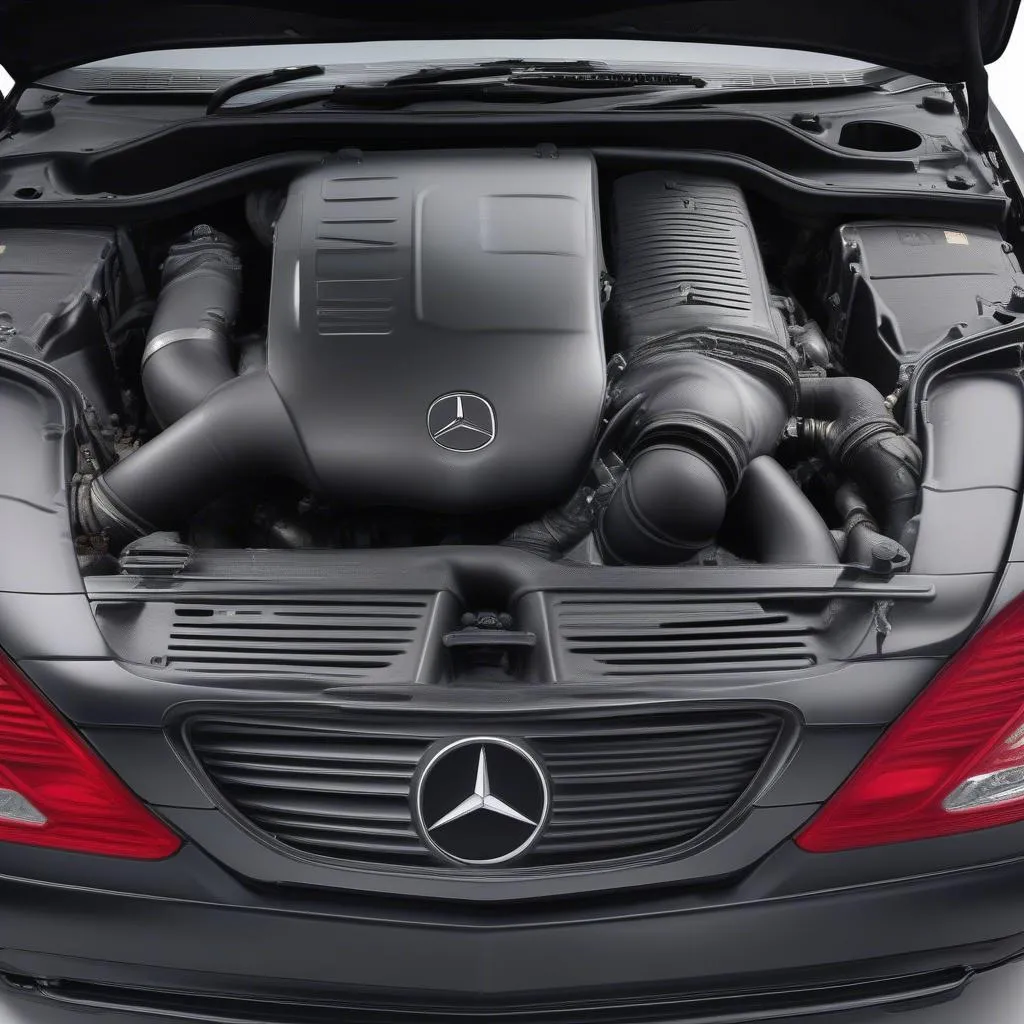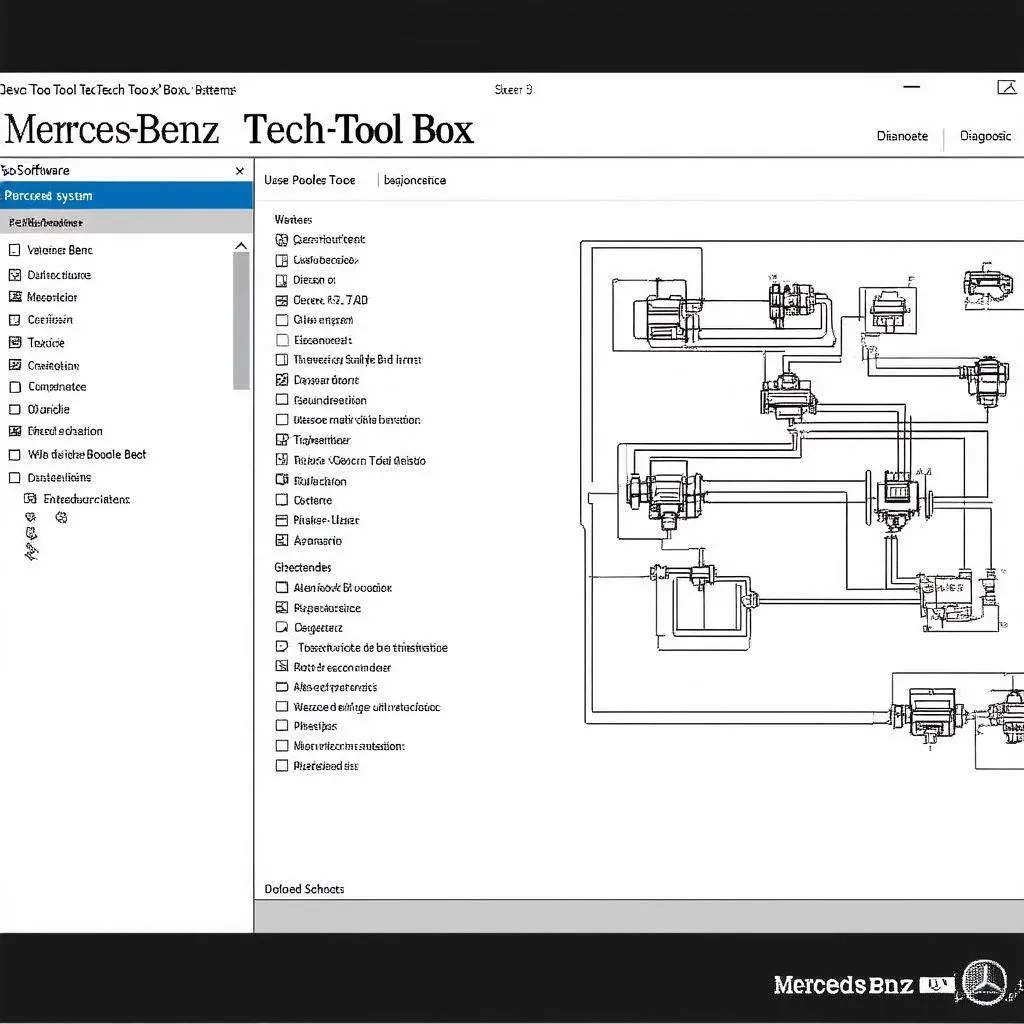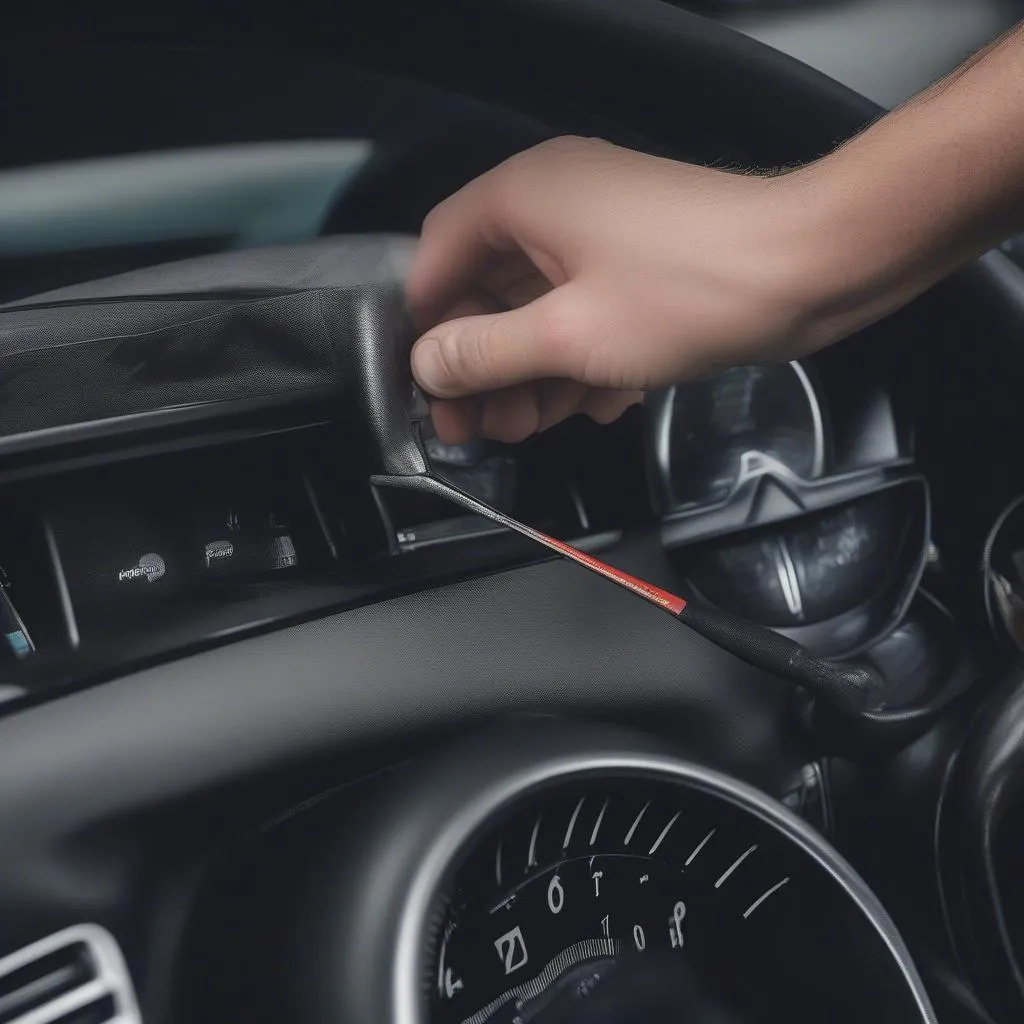If you’re driving a 2003 Mercedes-Benz C240 and your check engine light is on, you might be facing the dreaded P0422 and/or P0432 OBD2 error codes. These codes indicate a problem with your catalytic converter system, specifically indicating its efficiency is below the required threshold. But don’t panic! This is a relatively common issue, and with a bit of guidance, you can get it fixed.
This comprehensive guide will walk you through the causes, symptoms, and most importantly, the solutions to these error codes. Let’s get started!
Understanding the Culprits: P0422 and P0432 Error Codes
Before we dive into the solutions, it’s crucial to understand what these codes mean:
-
P0422: This code signifies that the catalytic converter system efficiency is below threshold for Bank 1. In simpler terms, the catalytic converter on engine bank 1 (usually the side with cylinder #1) isn’t doing its job of converting harmful exhaust gases into less harmful ones effectively.
-
P0432: This code mirrors P0422 but points to Bank 2, indicating the same issue but on the opposite engine bank.
While seeing both codes simultaneously isn’t uncommon, addressing the root cause is essential to prevent further damage and ensure your Mercedes is running at its best.
What Causes These Error Codes?
Several culprits can trigger the P0422 and P0432 codes in your Mercedes C240. Here are the most common:
-
Worn-out Catalytic Converter(s): This is the most likely culprit, especially in higher mileage vehicles. Catalytic converters have a lifespan and degrade over time due to constant exposure to high heat and exhaust gases.
-
Faulty Oxygen Sensors: Oxygen sensors (both upstream and downstream) play a vital role in monitoring the efficiency of the catalytic converter. A malfunctioning sensor can send incorrect data to the car’s computer (ECU), triggering these error codes, even if the catalytic converter is functioning correctly.
-
Exhaust Leaks: Leaks in your exhaust system, particularly before the catalytic converter, can disrupt the exhaust flow and skew the oxygen sensor readings, leading to false error codes.
-
Engine Performance Issues: Problems like misfires, rich fuel mixtures, or oil burning can damage the catalytic converter over time, leading to reduced efficiency and triggering these codes.
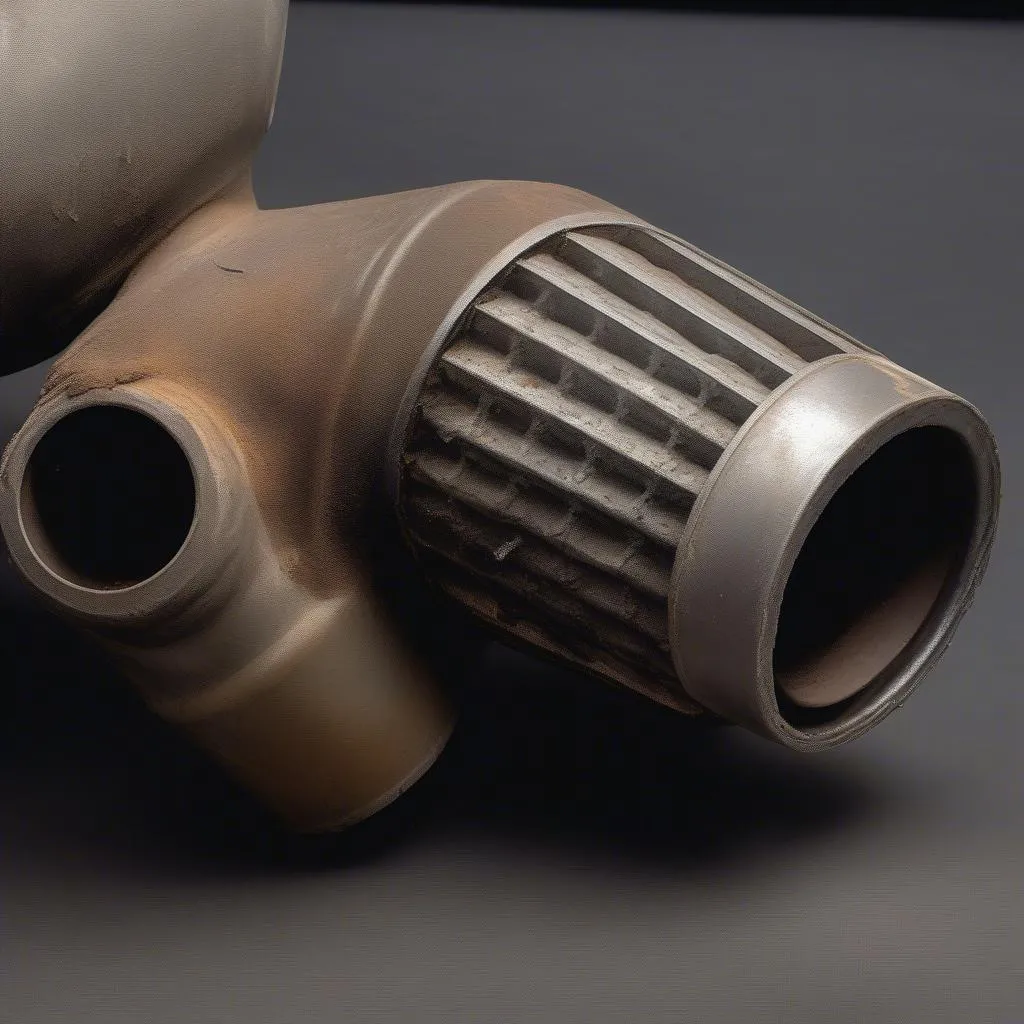 Worn Out Catalytic Converter
Worn Out Catalytic Converter
Recognizing the Symptoms
Besides the illuminated check engine light, here are other symptoms you might experience if your C240 is suffering from these error codes:
- Reduced Fuel Economy: A drop in your gas mileage could be an early indicator of a catalytic converter issue.
- Sluggish Engine Performance: You might notice a decrease in your car’s acceleration and overall power.
- Sulfur-like Smell: A strong, unpleasant odor resembling rotten eggs from the exhaust can be a telltale sign of a failing catalytic converter.
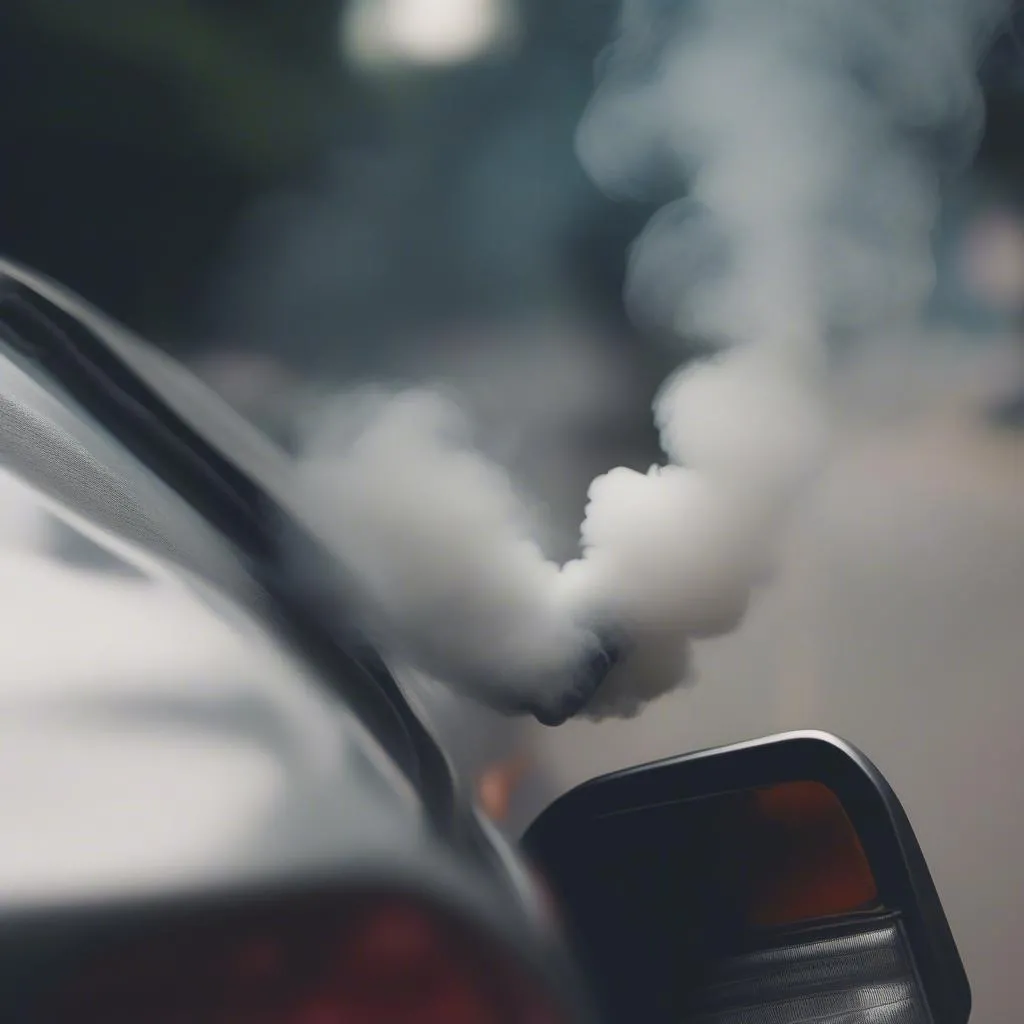 Car Exhaust Fumes
Car Exhaust Fumes
Gearing Up for the Fix: Essential Tools
Before starting any repairs, gather these tools:
- OBD2 Scanner: To read and clear the error codes.
- Jack and Jack Stands: For safe access under the vehicle.
- Socket Set and Wrenches: To remove and install sensors and other components.
- Penetrating Oil: To loosen stubborn bolts.
- Replacement Parts: New catalytic converter(s) (if needed), oxygen sensors, and exhaust gaskets.
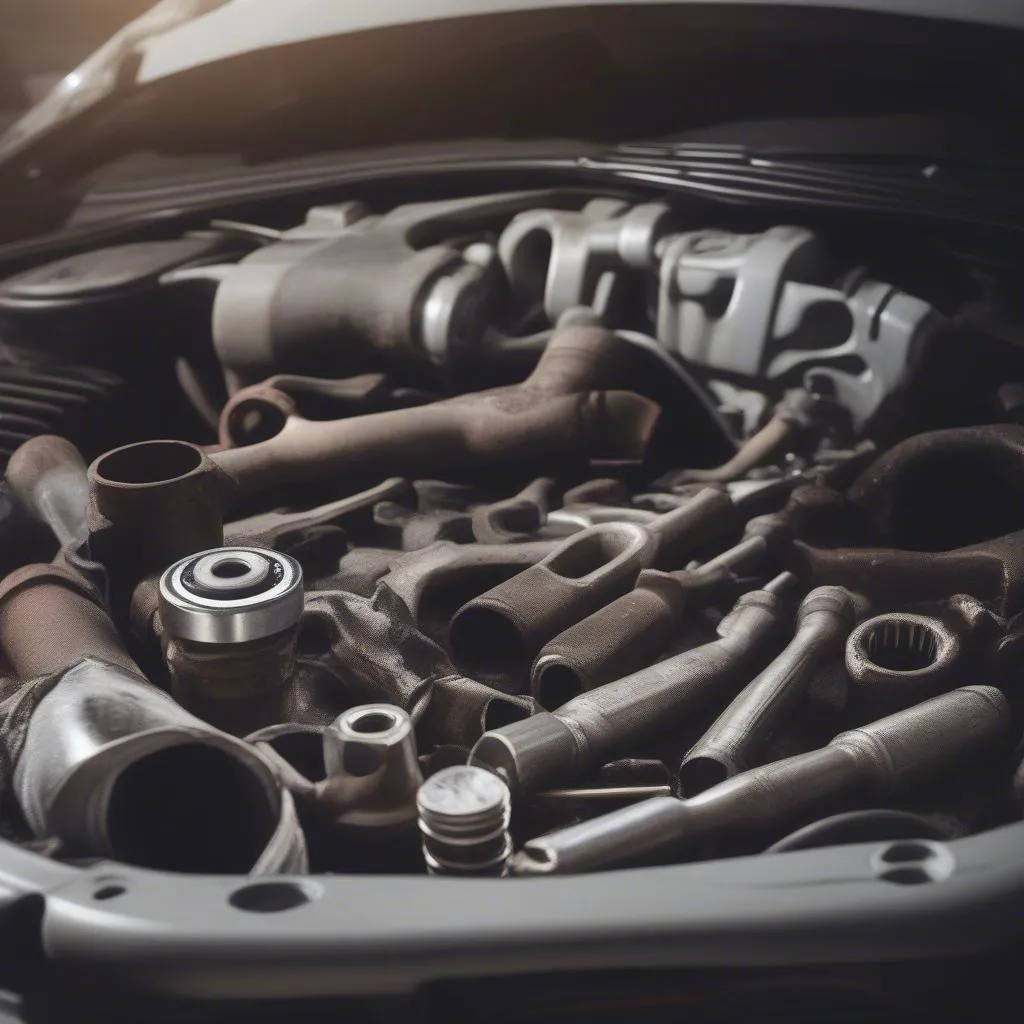 Mechanic Tools and Catalytic Converter
Mechanic Tools and Catalytic Converter
Fixing the Problem: A Step-by-Step Guide
1. Diagnose the Issue:
- Begin by connecting your OBD2 scanner and reading the error codes. Ensure you’re dealing with P0422 and/or P0432 specifically.
- Inspect for exhaust leaks, paying close attention to the area around the catalytic converter(s).
2. Address Underlying Issues:
- If you find any exhaust leaks, repair them before proceeding.
- If you suspect faulty oxygen sensors (which often precede catalytic converter failure), replace them.
- Address any engine performance issues like misfires or rich fuel mixtures, as these can damage a new catalytic converter.
3. Catalytic Converter Replacement (If Necessary):
-
Important: Replacing a catalytic converter can be complex and may require professional help.
-
If you’re comfortable tackling the job yourself, follow these general steps (always refer to your vehicle’s repair manual for specific instructions):
- Disconnect the negative battery terminal.
- Locate the catalytic converter(s) – they resemble small mufflers and are located in the exhaust system.
- Remove the oxygen sensors from the converter(s).
- Carefully cut the exhaust pipes to remove the old converter(s), following safety precautions.
- Install the new catalytic converter(s) using new gaskets and hardware.
- Reinstall the oxygen sensors.
- Connect the exhaust pipes and tighten all clamps securely.
- Reconnect the negative battery terminal.
4. Clear the Codes and Test Drive:
- Once the repairs are complete, use your OBD2 scanner to clear the error codes.
- Start your engine and let it run for a few minutes, checking for any leaks.
- Take your C240 for a test drive to ensure the check engine light stays off and the symptoms are gone.
Frequently Asked Questions
Here are some common questions about these error codes and their fixes:
Q: Can I drive my car with the P0422 or P0432 code?
A: While you might be able to drive for a short period, it’s not recommended. Driving with a failing catalytic converter can lead to further damage to your exhaust system and engine, potentially leading to costlier repairs down the line.
Q: How long does a catalytic converter last?
A: Catalytic converters are designed to last for around 100,000 miles. However, factors like driving habits, fuel quality, and engine condition can affect their lifespan.
Q: How much does it cost to replace a catalytic converter on a 2003 Mercedes C240?
A: The cost can vary depending on whether you choose OEM or aftermarket parts and if you opt for professional installation. On average, you can expect to pay between $1000 to $2500 for parts and labor.
Q: Are there any preventative measures to avoid these codes in the future?
A: Yes! Regular vehicle maintenance, including timely oil changes, using good quality fuel, and addressing engine issues promptly, can go a long way in prolonging the life of your catalytic converter and preventing these error codes.
Q: Can diagnostic software like Cardiagtech help me pinpoint the issue?
A: Yes, advanced OBD2 scanners, such as those offered by CARDIAGTECH, can provide more detailed information beyond generic codes, potentially helping you identify the root cause more accurately.
In Conclusion
Encountering P0422 and P0432 error codes on your 2003 Mercedes-Benz C240 can be concerning, but it’s manageable with the right information and approach. Remember to diagnose the problem thoroughly, address any underlying engine issues, and replace the catalytic converter(s) if needed. Regular maintenance and proactive care are your best allies in preventing these issues and keeping your Mercedes running smoothly for miles to come.

